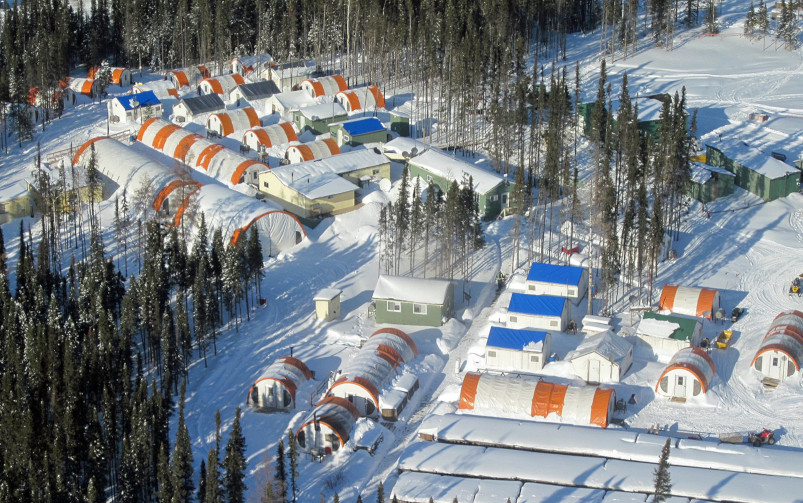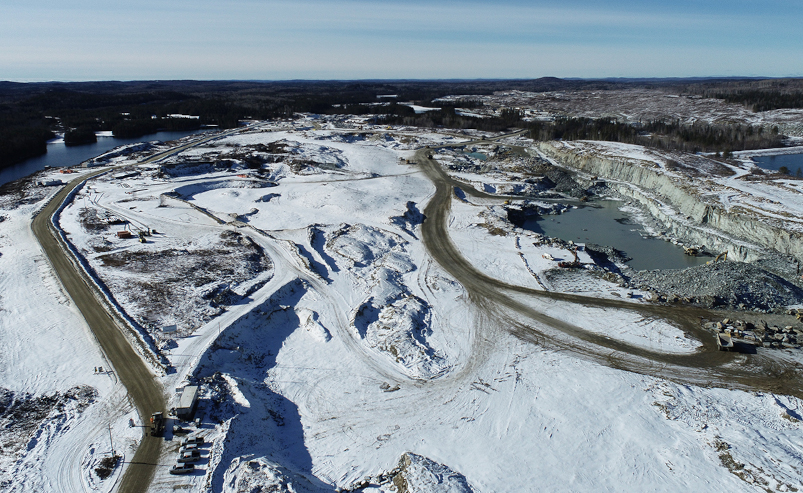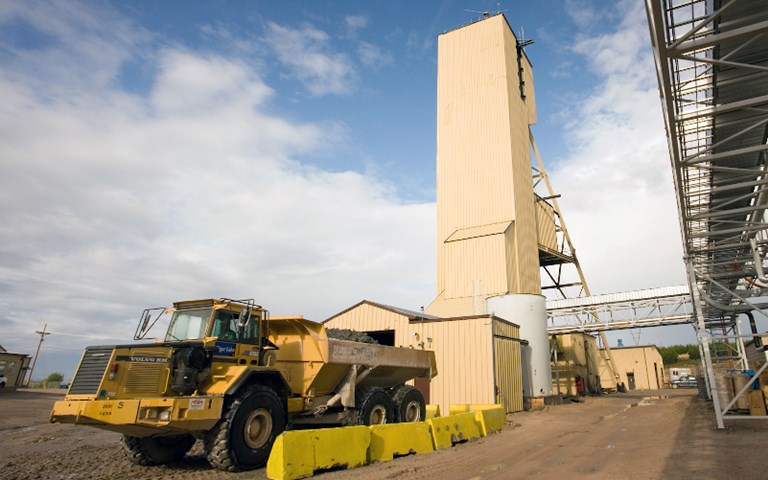Cameco plans to resume operations at its Cigar Lake uranium mine following a COVID-19-related shutdown in December. Courtesy of Cameco.
(Like what you’re reading? Get our weekly recap delivered straight to your inbox each Friday.)
Welcome back to your weekly mining news recap, where we catch you up on some of the news you may have missed. This week’s headlines include an investment in Ontario’s mine rescue program, the challenges of filing reports during a pandemic and commitments to renewable energy.
Cameco announced that it will restart production at its Cigar Lake uranium mine located in northern Saskatchewan after it was suspended in December due to COVID-19. The company says that enhanced safety protocols and the establishment of a testing facility on site will allow it to restart production, and that it will continue to monitor COVID-19 case counts and the success of the province’s vaccine rollout. The exact timing of the restart will also depend on how quickly Cameco can remobilize its employees.
Sudbury’s Laurentian University, coping with financial troubles, has made the decision to close 58 undergraduate programs and 11 graduate programs, dismissing 100 professors in the process, as reported by CBC. Some of the programs that will be cut include environmental geoscience, restoration biology and its French-language mining engineering program. Students currently enrolled in these programs will be able to complete their degrees early, transfer to a related program or to another institution altogether.
The premiers of four provinces have signed a memorandum to explore the feasibility of using small modular nuclear reactors (SMRs) as a source of energy in their provinces, as reported by CBC. Alberta, Ontario, Saskatchewan and New Brunswick will participate, following Canada’s commitment back in December to develop and deploy SMRs as an alternative energy source. Concurrently, Canadian Nuclear Laboratories announced that it has successfully created fuel pellets specifically designed to be used with SMRs.
As part of its 2021 budget, Ontario is investing $8 million into the province’s Mine Rescue Program. The Sudbury-based program has eight rescue stations across Ontario, and comprises of over 900 certified volunteers. According to the province, the funding will be used to increase training hours for the volunteers and develop new programs to better support rescue capacity for surface mines and processing plants.
Natural Resources Canada (NRCan) is investing over $730,000 in Université Laval’s clean technology pilot project to eliminate the use of cyanide from the gold extraction process. The federal funding, made through the Clean Growth Program, will be joined by investments from Corem and the university to total more than $1 million. According to NRCan, once deployed commercially, the project could help reduce the environmental impact of gold mining and generate jobs for operators, technicians and engineers in gold refineries.
The onset of the COVID-19 pandemic threw many aspects of conducting business in the mining industry for a loop, and meeting technical and financial reporting requirements was no exception. Chris Collins and Craig Waldie, co-chairs of the Canadian Securities Administrators, sat down with CIM Magazine to discuss the main concerns around the reporting process and the best practices companies should follow when issuing reports.
A COVID-19 outbreak at Hudbay Minerals’ Snow Lake and Flin Flon operations in Manitoba has resulted in a temporary shutdown of the company’s Stall mill, as reported by CTV News. There are currently not enough employees to operate the mill, but operations are expected to resume next week. Hudbay says that everyone impacted by the outbreak is self-isolating and that it is working on providing access to rapid COVID-19 testing on site.
New changes to British Columbia’s mining code have come into effect, focusing on improvements to safety and modernizing existing provisions, as reported by e-KNOW. Some of the changes include aligning the impairment clause with the federal legalization of marijuana, updating the Workplace Hazardous Materials Information System and ensuring safety mechanisms are in place for under-truck repairs on haul trucks.
The Global Mining Guidelines Group has released its landscape of interoperability activities in the mining industry, compiling different interoperability projects from different organizations across the mining landscape. The landscape will be continuously updated and according to GMG, will address a need for more visibility on what different organizations are doing to advance interoperability to enable collaboration between organizations.
Anglo American announced that it has kept its promise to source 100 per cent renewable energy for its South American operations in Brazil, Chile and Peru. According to group director of corporate relations and sustainable impact Anik Michaud, this marks another step towards the company’s goal of reducing its greenhouse gas emissions by 30 per cent by 2030 and its commitment to become carbon-neutral across all its operations by 2040.
B2Gold has completed commissioning of the world’s largest off-grid solar-battery hybrid system to power its Fekola gold mine in Mali, as reported by Mining Global. During the day, the solar plant generates enough energy to allow half of the operation’s heavy fuel oil generators to be shut down, and the battery storage compensates for energy generation fluctuations and covers 75 per cent of the mine’s daytime electricity demand. According to B2Gold, the solar plant will save 13.1 million litres of heavy fuel oil per year.
If you’ve got feedback, you can always reach us at editor@cim.org. If you’ve got something to add, why not join the conversation at our Facebook, Twitter or LinkedIn pages? Like your recap with a few more gifs? Check out our mining news recap stories on our Instagram.
Remember to stay safe, keep your distance and wash your hands!




